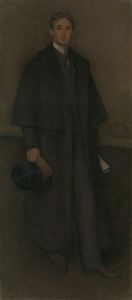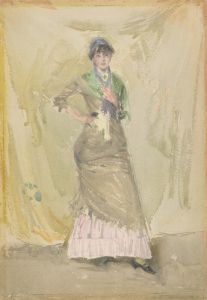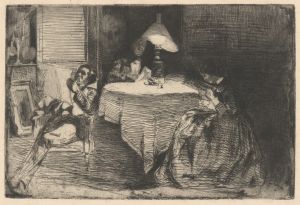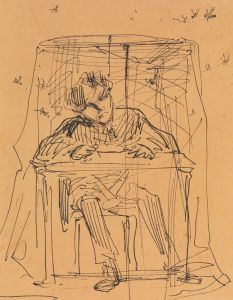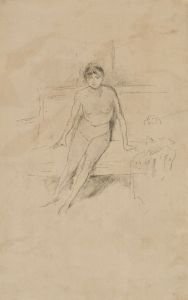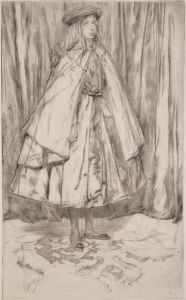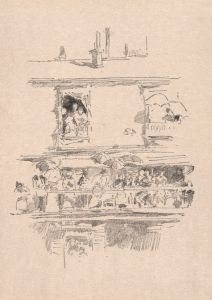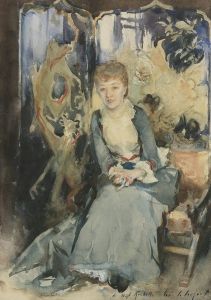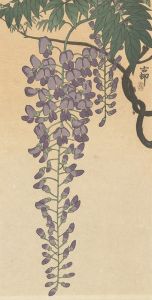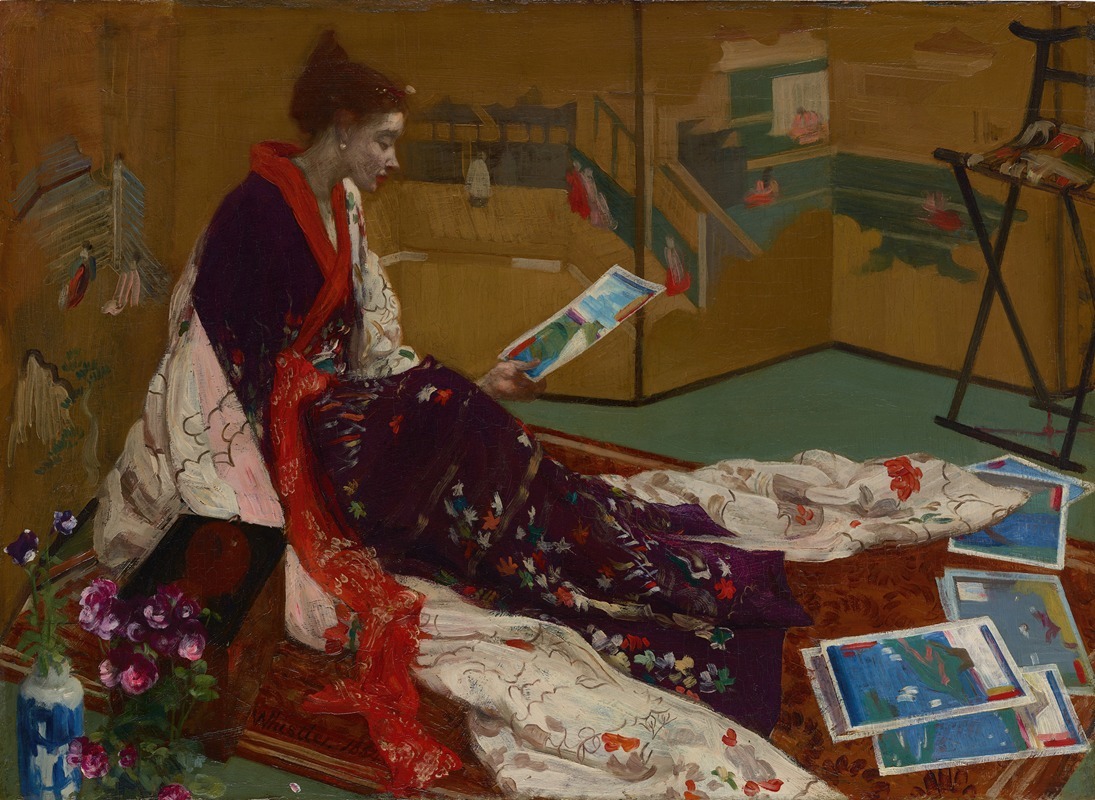
Caprice in Purple and Gold; The Golden Screen
A hand-painted replica of James Abbott McNeill Whistler’s masterpiece Caprice in Purple and Gold; The Golden Screen, meticulously crafted by professional artists to capture the true essence of the original. Each piece is created with museum-quality canvas and rare mineral pigments, carefully painted by experienced artists with delicate brushstrokes and rich, layered colors to perfectly recreate the texture of the original artwork. Unlike machine-printed reproductions, this hand-painted version brings the painting to life, infused with the artist’s emotions and skill in every stroke. Whether for personal collection or home decoration, it instantly elevates the artistic atmosphere of any space.
"Caprice in Purple and Gold; The Golden Screen" is a painting by James Abbott McNeill Whistler, an American-born artist who was active during the late 19th century. Whistler is known for his contributions to the Aesthetic Movement, which emphasized the visual and sensual qualities of art over its narrative or moral content. This particular work is part of Whistler's exploration of color harmony and composition, often referred to as his "Nocturnes" and "Symphonies."
Created in 1864, "Caprice in Purple and Gold; The Golden Screen" is an oil on wood panel painting that measures approximately 50.2 cm by 68.5 cm. The painting is notable for its use of a Japanese screen, which reflects Whistler's fascination with Japonisme—a trend among Western artists who were inspired by Japanese art and design. This influence is evident in the composition and the decorative elements of the painting.
The painting depicts a woman dressed in a kimono, seated in front of a golden Japanese screen. The screen itself is adorned with intricate patterns and designs, adding a rich texture to the background. The woman's attire and the screen's decoration highlight Whistler's interest in the interplay of colors and textures. The use of purple and gold in the painting's title underscores the artist's focus on color harmony, a central theme in his work.
Whistler's technique in this painting involves delicate brushwork and a subtle blending of colors, which create a sense of depth and atmosphere. The composition is carefully balanced, with the figure positioned slightly off-center, drawing the viewer's eye across the canvas. The painting's overall effect is one of elegance and refinement, characteristic of Whistler's mature style.
"Caprice in Purple and Gold; The Golden Screen" is part of the collection at the Freer Gallery of Art in Washington, D.C., which houses an extensive collection of Whistler's works. The gallery's founder, Charles Lang Freer, was a significant patron of Whistler and collected many of his paintings, drawings, and prints. Freer's support helped to establish Whistler's reputation as a leading artist of his time.
Whistler's work, including "Caprice in Purple and Gold; The Golden Screen," has been influential in the development of modern art. His emphasis on the aesthetic qualities of art, rather than its narrative content, paved the way for later movements such as Impressionism and Abstract Art. Whistler's innovative use of color and composition continues to be studied and admired by art historians and enthusiasts alike.
In summary, "Caprice in Purple and Gold; The Golden Screen" is a significant work by James Abbott McNeill Whistler that exemplifies his interest in color harmony, Japonisme, and the aesthetic movement. The painting's refined composition and delicate execution make it a notable example of Whistler's artistic achievements.





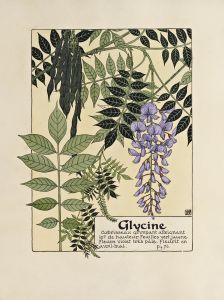
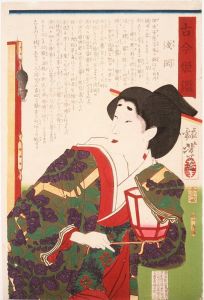
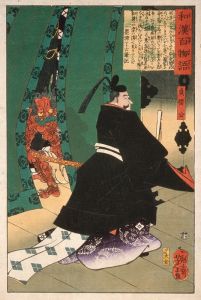
![Graphic design drawings for Barricini Candy packages.] [Study, wheel pattern lid design in blue, yellow, and gold](/imgs/249348/s/winold-reiss-graphic-design-drawings-for-barricini-candy-packages-study-wheel-pattern-lid-design-in-blue-yellow-and-gold-18aaf641.jpg)
